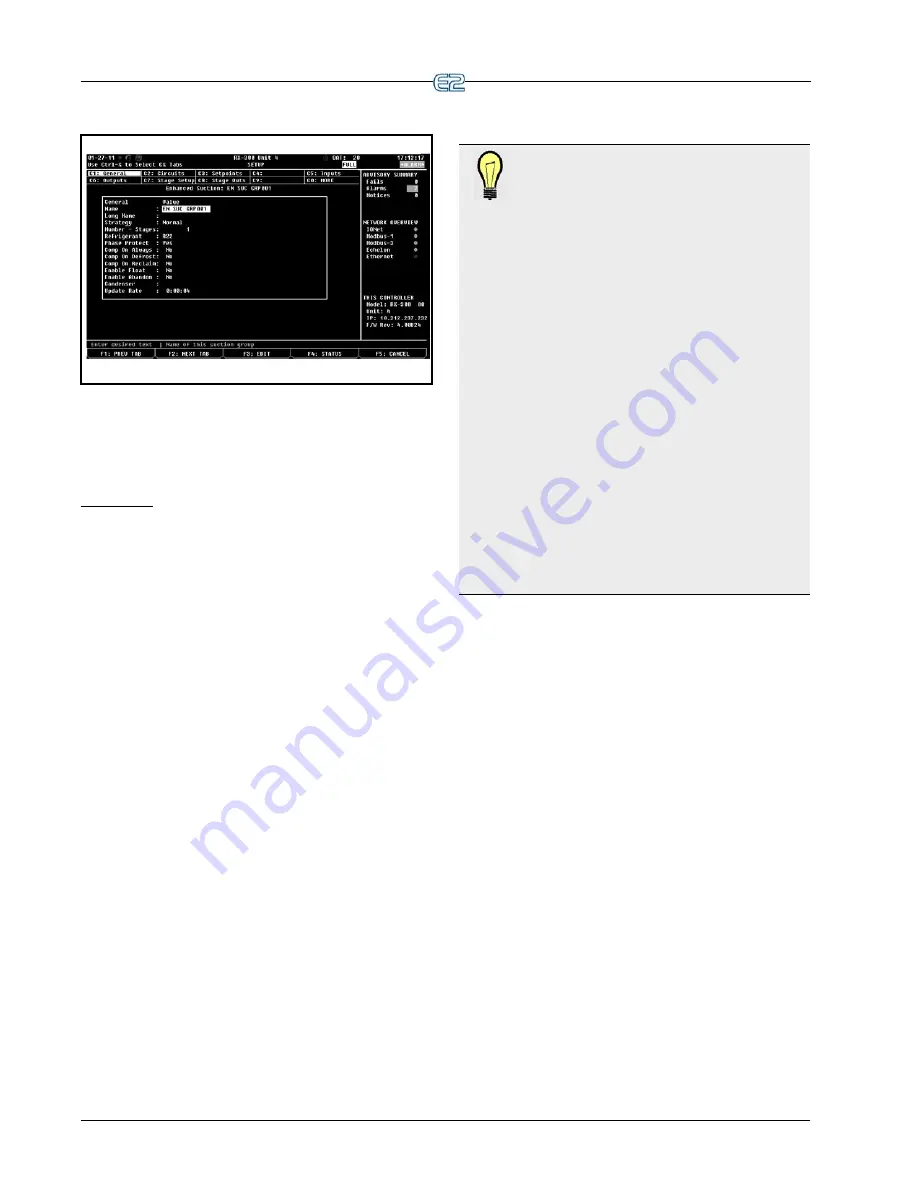
26
•
E2 RX/BX/CX I&O Manual
3.11.2.3 Navigating the Setup Screen
Figure 3-35
- Typical Setup Screen (RX version shown)
The Setup utility is the interface used to change set-
tings and setpoints, and define inputs and outputs in the
E2.
and
show a typical Setup
screen and its primary elements.
Index Tabs
The ten boxes at the top of the screen labeled
C1
through
C0
are known as the
index tabs
. These tabs pro-
vide a short index of the screens that are used to set up the
current application. The numbers
C1
through
C0
represent
the screen numbers (
C1
being screen 1,
C2
being screen 2,
and so on).
Each of the Setup screens that you may access will
have a name beside its number. But as in
and
for example, you will notice some tabs have
names, while others are blank.
As you move through these screens within the Setup
Editor, the highlight will move to different tabs to indicate
which screen is being displayed.
• Pressing
(PREV TAB) will back-up the order
of the screens.
• Pressing
(HOME) at any point will take you
to the Main Status (Home) screen.
TIP: To see each screen in a typical setup for
the E2 RX controller, start from the Main Sta-
tus (Home) screen.
1.
Position the cursor somewhere inside the Suc-
tion Groups section and press
and
(Setup), or just
(SETUP) from the Home
screen. The General Setup screen will be dis-
played.
2.
Press
(NEXT TAB) to move the cursor
to Setpoints. The Setpoints Setup screen is dis-
played.
3.
Press
again and the Inputs Setup screen
comes up.
4.
Press
a few more times to see the rest of
the Setup menu screens. When the C0 tab
(MORE) is highlighted, there may be more
than one extra Setup screen. Press
+
(zero) to see a list of all Setup screens for that
application.
5.
Keep pressing
while taking note of the
extra screens until C1 is highlighted once
more.
These screens (
C1
through
C0
) contain all of the set up
information that is associated with the selected suction
group.
Blank tabs are inaccessible. There are several reasons
why a tab may be inaccessible (i.e., without a name next to
the number):
• The tab (and the corresponding screen) is unused
and reserved for later revisions.
• The screen may only be accessed when running in
Full Options mode.
• The screen may require one or more fields to be set
to certain values before the screen may be accessed.
For example, a screen containing nothing but com-
pressor proof input definitions might be hidden if
there is a field on another screen that tells the sys-
tem there are no proof checking devices on the
group’s compressors. To access this screen, you
would have to set this field to “YES”.
The screen you are currently in is always highlighted
in the screen’s index tab. For example, in
, because Screen 1 is displayed, tab
C1
is
highlighted.

























